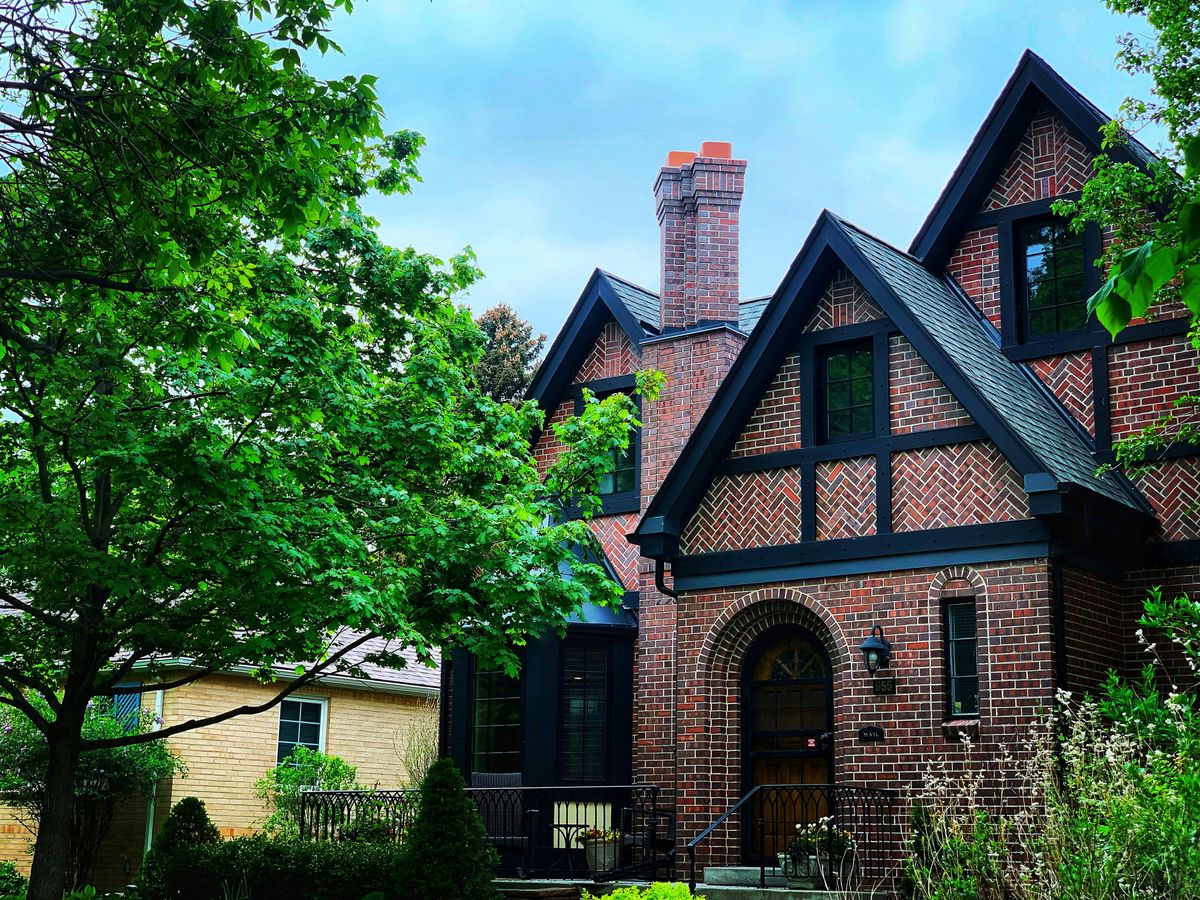Hey everyone! For over a decade now, I’ve been elbow-deep in the world of home design and construction, and if there’s one trend that continues to dominate and evolve in fascinating ways, it’s the open-concept living area. Especially here in Denver, where modern families are looking for spaces that are as adaptable and dynamic as their lifestyles, open-concept design offers a fantastic solution. It's more than just a design choice; it's a way to enhance how families connect and live together. As of mid-2025, we're seeing even more innovative approaches to making these spaces truly work for everyone.
Understanding the Advantages of Open-Concept Design
So, what’s all the buzz about open-concept living? Well, for starters, it’s a game-changer for family interaction. By removing walls between the kitchen, dining, and living areas, you create one large, cohesive space where everyone can feel connected, even if they’re doing different things. Imagine cooking dinner while still being part of the kids' homework chat or the movie night unfolding in the living room. No more shouting from separate rooms or feeling isolated. This increased visibility is a huge plus for parents keeping an eye on little ones too.
Another major benefit is the flood of natural light. Fewer walls mean light can flow freely throughout the space, making your home feel brighter, airier, and frankly, more spacious. This visual flow isn’t just aesthetically pleasing; it can genuinely lift your mood and make your home a more inviting place to be. And let’s not forget flexibility. Open-concept areas are chameleons – they can adapt to various activities, from a large family gathering to a quiet evening with a book, or even a makeshift home office space. The ability to have multifunctional zones within one larger area is something modern families really value.
At Epic Mtn Design & Build, we’ve seen firsthand how transformative open-concept living can be. We work closely with our clients to understand their unique needs and then integrate these open-concept principles thoughtfully. It's not just about knocking down walls; it's about creating smart, beautiful spaces that enhance daily life here in Colorado.
Planning Your Living Area Layout in Denver Homes
Alright, let's get into the nitty-gritty of planning your open-concept living area, especially with Denver’s unique character in mind. The first step, and it’s a big one, is to really assess your family’s daily routines and how you *actually* use your space. Are you big entertainers? Do you need a dedicated spot for kids' play or a quiet corner for work-from-home days? Honest answers here will guide your entire layout.
Once you've got a handle on your needs, it’s time to map out your key zones. Typically, these are the kitchen, dining area, living space, and increasingly, a work or study nook. Even without walls, you can create visual and functional distinctions between these areas. Think about traffic flow – how will people move through the space? You want clear, unobstructed pathways. Sightlines are important too; consider what you want to see from different points in the room. For instance, can you see the kids in the living area from the kitchen island?
Now, let's talk about designing for Denver's climate. We get a real mix of weather here, from snowy winters to hot, sunny summers. So, heating, cooling, and insulation are crucial. In an open-concept space, temperature regulation can sometimes be a bit trickier than in a home with separate rooms. Proper insulation is key to maintaining comfort and energy efficiency. Strategically placed windows can maximize winter sun for warmth and be shaded in summer to keep things cool. We also think about materials and construction techniques that stand up to Colorado’s climate, ensuring your open space is comfortable year-round.
Balancing Style and Practicality: Design Strategies
Creating a beautiful open-concept space is one thing, but making it truly functional and livable for a busy family is another. It’s all about striking that perfect balance between style and practicality. Let's dive into some strategies that work wonders, especially with our Colorado lifestyle in mind.
First up, materials and finishes. Here in Denver, we need things that are durable and can handle everything from muddy paws to spilled juice. Think engineered hardwoods, luxury vinyl plank, or even polished concrete for floors – they look great and are easy to clean. For countertops, quartz remains a popular choice for its resilience and low maintenance. When selecting finishes, consider materials that are local or at least well-suited to our climate. For example, certain woods and stones can add a lovely Colorado touch. Sustainability is also a growing trend, with reclaimed wood and recycled materials becoming stylish and eco-conscious choices.
Furniture arrangement is key to defining zones without walls. Think about creating conversational groupings in the living area. Floating furniture away from the walls can actually make the space feel larger and improve flow. Modular furniture is a fantastic option for flexibility, allowing you to reconfigure the space as needed. Trends for 2025 are definitely leaning towards warmth and craftsmanship, pairing clean lines with rich textiles and natural woods.
Now, let's talk storage. This is often the Achilles' heel of open-concept living. Without walls to hide things behind, clutter can quickly take over. The trick is to incorporate storage solutions that are seamless and don't interrupt the openness. Think built-in cabinetry, ottomans with hidden storage, or stylish shelving units that can also act as subtle room dividers. Kitchen islands with ample storage are a must. Wall space, where available, should be utilized effectively with floating shelves or slim cabinets.
Lighting is your secret weapon for delineating zones and creating ambiance. Layering different types of light is crucial. Use pendant lights to define the kitchen island or dining area, task lighting for workspaces, and softer, ambient lighting like floor and table lamps in the living area to create a cozy feel. Dimmers are your best friend, allowing you to adjust the mood for different activities. As we look at 2025 trends, statement lighting fixtures continue to be popular, acting as focal points within each zone.
Here's a quick step-by-step for arranging your open-concept living area:
- Choose a focal point for each zone: This could be a fireplace, a large window with a view, or a piece of art. Arrange furniture to complement this focal point.
- Arrange seating for conversation and function: In the living area, group sofas and chairs to facilitate easy conversation. Ensure seating in the dining area is comfortable and accessible.
- Layer your lighting: Combine ambient, task, and accent lighting to define zones and create mood.
- Add soft partitions if needed: Use area rugs, open shelving, or even a strategically placed console table to visually separate zones without closing them off. Area rugs are particularly effective at anchoring a space.
By thoughtfully combining these elements, you create an open-concept space that's not just stylish but also incredibly practical for modern family life in Denver.
Bringing Your Open-Concept Vision to Life with Epic Mtn Design & Build
So, you’re dreaming of an open-concept living area that perfectly suits your family’s lifestyle here in beautiful Colorado? That’s where we, at Epic Mtn Design & Build, come in. As a husband and wife duo with over a decade of hands-on experience in craftsmanship and design, we're not just builders; we're creators of living spaces tailored to the unique demands of Colorado living and the specific desires of our clients.
Why choose Epic Mtn Design & Build as your partner? We pride ourselves on being premier Colorado custom home builders and remodelers. Whether you're looking to build a brand-new custom home designed around an open-concept philosophy or remodel your existing space to embrace this airy, connected way of living, we have the expertise. Our services are specifically tailored to bring open-concept designs to life, ensuring they are both beautiful and highly functional.
Our design-build process is truly collaborative, guiding you from the initial concept all the way to the final nail. It starts with a consultation where we listen intently to your vision, your family’s needs, and how you imagine using your space. We then move into the design review phase, where we translate those ideas into tangible plans, incorporating those all-important open-concept principles like maximizing natural light, ensuring good traffic flow, and creating flexible zones. Throughout the construction phase, our commitment to quality craftsmanship and meticulous attention to detail is unwavering. We understand that building or remodeling a home is a significant journey, and we're dedicated to making it a smooth and rewarding one for you.
Ready to take the next step? It all begins with a conversation. We’d love to schedule a consultation to discuss your ideas and explore how we can transform your vision into a stunning reality. From there, we’ll move through the design review process, refining every detail, and then establish a clear construction timeline. Let's create an open-concept living area that your family will love for years to come!
What are your biggest questions or excitements about designing an open-concept living space? Drop a comment below – I’d love to hear your thoughts and share more insights!
Frequently Asked Questions
What are the primary benefits of an open-concept living area?
Open-concept living areas enhance family interaction, increase natural light, and offer flexibility for various activities.
How can I effectively plan the layout of an open-concept space?
Assess your family's needs, map out key zones (kitchen, dining, living), consider traffic flow and sightlines, and design for your local climate.
How can I balance style and practicality in an open-concept design?
Choose durable materials that are easy to clean, arrange furniture to define zones, incorporate seamless storage solutions, and layer lighting to create ambiance.
What are the different layout patterns for open-concept designs?
There are zoned, partially open-concept, and fully open-concept layouts, each with its own advantages and disadvantages regarding separation, light, and noise control.
How important is lighting in an open-concept space?
Lighting is crucial, using pendant lights, task lighting, and ambient lighting to define zones and create different moods.
Why is temperature regulation in an open-concept living area important?
Because in large open spaces it can be tricky to regulate temperature due to lack of walls, so consider proper insulation and strategically placed windows.

